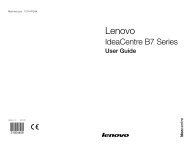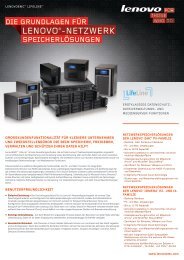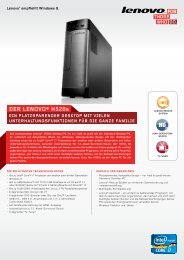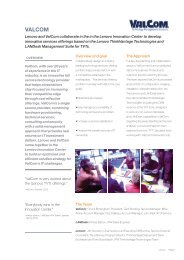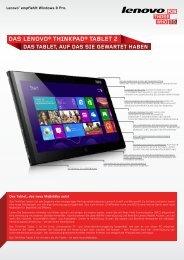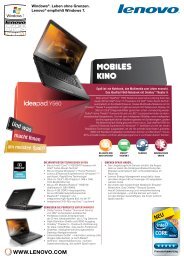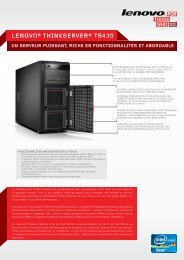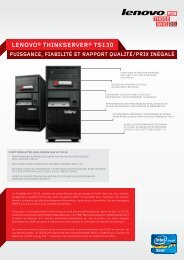Create successful ePaper yourself
Turn your PDF publications into a flip-book with our unique Google optimized e-Paper software.
– If the battery has not been used for a long time.<br />
Before you charge the battery, make sure that its temperature is at least 10°C (50°F).<br />
Charging the battery<br />
When you check battery status and find that the percentage of power remaining is low or when the power<br />
alarm alerts you that remaining power is low, you need to charge your battery or replace it with a charged<br />
battery.<br />
If an ac outlet is convenient, plug the ac power adapter into it, and then insert the jack into the computer. The<br />
battery will charge in about 3 to 6 hours. This is affected by the battery size and the physical environment.<br />
The battery status indicator will let you know that the battery is charging, and will also notify you when the<br />
battery is fully charged.<br />
Note: To increase the life of the battery, the computer does not start recharging the battery if the remaining<br />
power is greater than 95%.<br />
Maximizing battery life<br />
To maximize the life of the battery, do the following:<br />
• Use the battery until the charge is completely depleted-until the battery status indicator starts blinking<br />
orange.<br />
• Recharge the battery completely before using it. The battery is fully charged if the battery indicator shows<br />
green when the ac power adapter is plugged in.<br />
• For a new battery or a battery that you have not used recently, do one of the following:<br />
1. Recharge the battery completely before using it. The battery is fully charged when the ac power<br />
adapter is plugged in and the battery indicator is green.<br />
2. Use the battery until the charge is completely depleted-until the battery status indicator starts<br />
blinking orange.<br />
• Always use power management features such as power modes, screen blank, sleep (standby), and<br />
hibernation.<br />
Managing your battery power<br />
With Power Manager, you can adjust your power settings to give you the best balance between performance<br />
and power saving.<br />
To start the utility program, do as follows:<br />
• For Windows 7: See “Accessing applications in Windows 7” on page 33.<br />
• For Windows Vista and Windows XP: Click Start ➙ All Programs ➙ ThinkVantage ➙ Power Manager.<br />
For more information about the Power Manager program, refer to the on-line help of the program.<br />
Power-saving modes<br />
There are several modes that you can use at any time to conserve power. This section introduces each<br />
mode and gives tips on the effective use of the battery power.<br />
Introducing the power-saving modes<br />
• Screen blank. The computer display requires considerable battery power. To turn off power to the<br />
display, do as follows:<br />
1. Press Fn+F3. A panel for selecting a power plan (in Windows XP, power scheme) appears.<br />
Chapter 2. Using your computer 59





